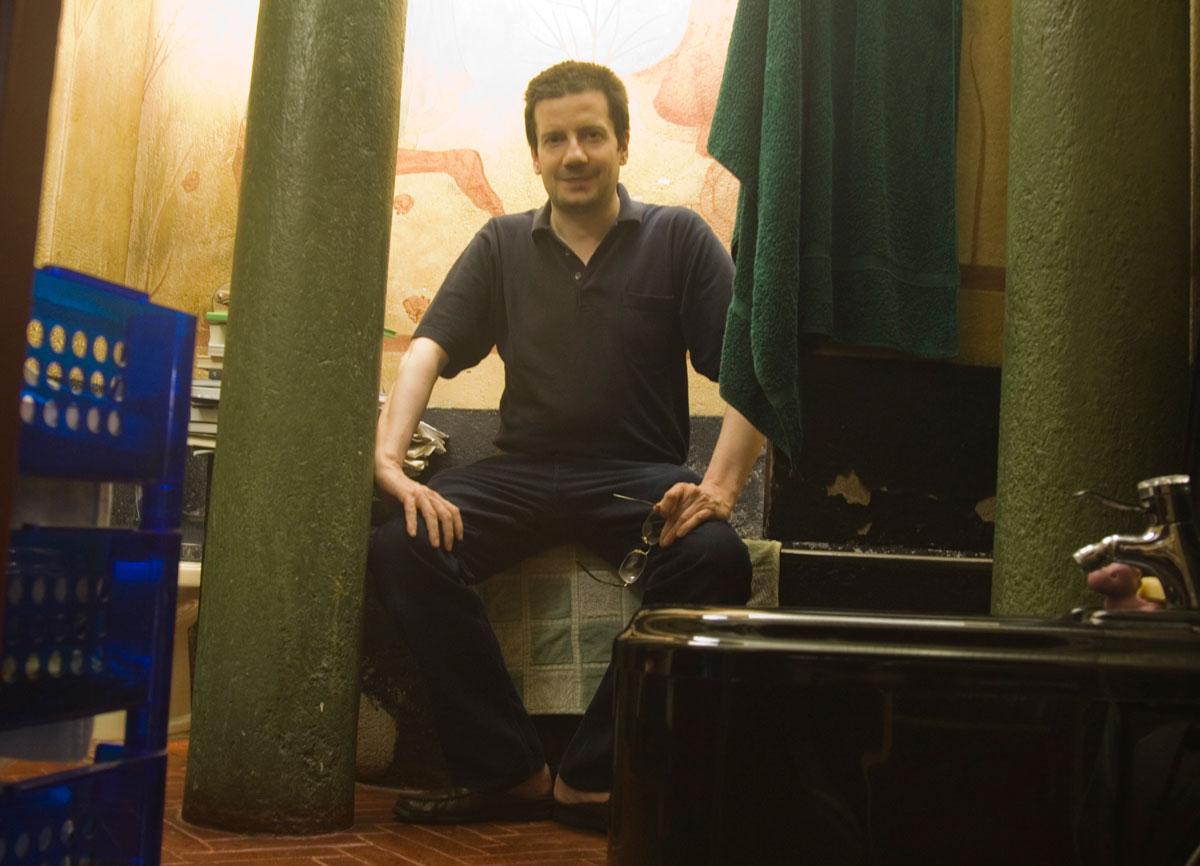Room 16
«Two different images can be seen – with expected difficulty – through the holes in the locks of two old adjoining bathrooms, where no one has washed for many years. It is a historical gimmick, with numerous occurrences, but nothing original about it. His twentieth-century peak is the Étant donnés by Marcel Duchamp in Philadelphia, but the personal genealogy also includes the chapels of the Sacred Mountains of the Alps and, of course, Giovanni Frangi’s recent View-Masters. No teenage voyeurs, no Malice. In the clear bathroom, a handful of toys, as if taken from the basket of an autogrill, but also Steiff animals, responds to “Adulthood, never” (and the consequent fascination for those who manage to be adults); In the dark bathroom, a slide projector reproduces a backlit detail of Giulio Romano’s Chamber of Psyche at Palazzo Te, which looks almost like a mature De Chirico. This time too, in short, the action appears to be a search in the direction of the “clarification of my expressive reasons”.»
Giovanni Agosti
«Anatomies of melancholy, labyrinths of ambiguity, enumeratory ecstasies, picaresque peripeteia, quotation imbandigions, “schidionate”, big pots, mille-feuilles, fireworks! In other words, the convivial triumph of a fragmentary “strategic” and “tactical” form, open to all winds. The opposite of a Thomas Mann who, even in the novel-essay, closes all speeches, all inverted commas, all parentheses.»
Alberto Arbasino
THE ARTIST
Giovanni Agosti was born in Milan in 1961. He has been teaching History of Modern Art at the University of Milan since 2000, after having worked for many years in the Superintendencies for the Historical and Artistic Heritage of Mantua and Florence. He has worked mainly on the classical tradition in Italian figurative culture, on relations between artists and writers, and on the Renaissance in northern Italy. He has written, among other things, Bambaia e il classicismo lombardo (1990), La testoriana di Brescia (1997), Disegni del Rinascimento in Valpadana (2001), Su Mantegna I. La storia dell’arte libera la testa (2005). In 2008, together with Dominique Thièbaut, he curated the Mantegna exhibition at the Louvre Museum and published Giovanni Frangi alle prese con la natura, a book that testifies to the possibility of creative exchanges between a critic and an artist. Agosti’s work emerges as a rethinking of the relationships between art history, the world of culture and Italian society, in a fusion of knowledge and styles that implicitly questions the canons of art history.



